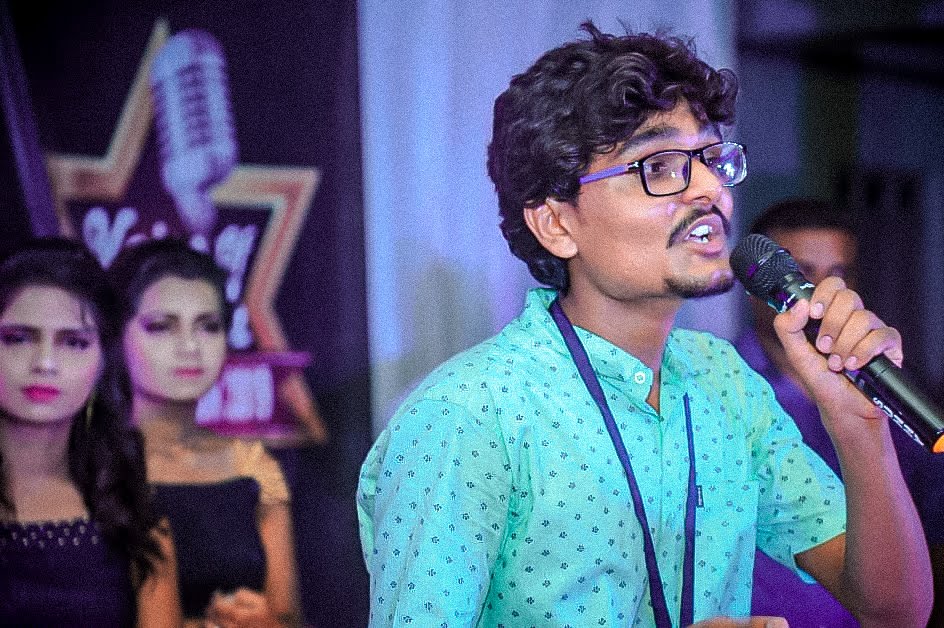- गीत के नैतिक निर्माण पर जोर (वादी और संवादी स्वर)।
- गायक तेज गति से ताली बजाता है, जिसे 'जोडा' के नाम से जाना जाता है। ताल बाद में साथ नहीं बजाया जाता।
- पूर्ण स्वरों को पहल, बताया जाता है। जिसके बाद विकृत स्वर पेश किए जाती हैं।
- शुद्ध स्वरा के थात को 'बिलावल' कहा जाता है।
- स्वरा में रेंज और फ्लेक्सिबिलिटी है।
- समय सीमा का पालन किया जाता है। सुबह और शाम के लिए अलग-अलग राग होते हैं।
- ताल सामान्य हैं।
- राग जाती भेद पर आधारित हैं।
- रागों को बदलते समय हिंदुस्तानी संगीत में कोई अनुपात नहीं है।
| हिंदुस्तानी शास्त्रीय संगीत |
कर्नाटक संगीत शैली
- इस शैली में ध्वनि की तीव्रता को नियंत्रित किया जा सकता है।पेचदार (कुंडली) स्वरा का उपयोग स्पष्ट है।
- राग की स्वच्छंद और विशिष्ट शैली।
- गायक 'आलाप' और 'तानाम' पाठ करता है।
- विकृत स्वरों का नाम श्रुतियों के अनुसार रखा गया है। इन्हें बाद में शुरू किया जाता है।
- स्वरों की शुद्धता कम श्रुति पर आधारित होती है, जिसका अर्थ उच्च शुद्धता होता है।
- शुद्ध स्वरा के थात को `मुखारी’ कहा जाता है।
- कर्नाटक संगीत में समय की अवधि को अच्छी तरह से परिभाषित किया गया है। मध्यलय 'विलंब लय' से दोगुना है और 'धृत लय' से दोगुना होता है।
Hindustani Style of Music
The origin of Hindustani Classical music can be considered from the Delhi Sultanate and Amir Khusrow (1233-1325 AD), a composer in Persian, Turkish, Arabic, as well as Braj Bhasha. He is credited with systematising some aspects of Hindustani Classical music, and also introducing several ragas such as Yaman Kalyan, Zeelaf and Sarpada. He created the Qawwali genre, which fuses Persian melody and beat on a Dhrupad like structure. A number of instruments (such as the sitar) were also introduced in his time.
Hindustani classical music is mostly popular in North India. When the Persian elements became popular in medieval India, this led to the emergence of the Hindustani classical music. Dhrupad is considered as the oldest creation of Hindustani classical music, which is a creation of Swami Haridas. Over the time Khyal, Thumri, Thappa, Tarana etc. developed as the distinct styles of Hindustani classical music.
Characteristics of Hindustani Style
The main characteristics of Hindustani style of music are given below:
- Emphasis on the moral construction of the song (Nadi and Samvadi swars).
- The singer recites the clap at a fast pace, which is known as ‘Joda’. Taal is not accompanied afterwards.
- Full swars are considered to be complete, after which the distorted swars are introduced.
- The thaat of pure swars is called ‘Tilawal’.
- There is range and flexibility in the swars.
- Time limits are followed. There are different ragas for morning and evening.
- Taals are normal.
- Ragasare based on gender differentiation.
- There is no ratio in Hindustani music while switching the ragas.
Carnatic style of music
Purandar Das is considered the founder of the Carnatic style of music. The credit for the development of the Carnatic music style mainly goes to the three composers named Shyama Shastri, Tyagaraja and Muthuswamy Dixit. He is called the Triratna of Carnatic classical music. Their period is from 1700 to 1850 AD. Apart from him, the three main exponents of Carnatic classical music were Kshatran Rajan, Swati Tirunal, Subramanya Bharati. They are all considered one of the seven great exponents of Carnatic classical music.
Laya is considered to be instrumental in playing the instrumental music associated with Carnatic classical music. Semungaddi, Mallikarjun Mansoor, Gangubai Hangal, Ramanuja Iyengar, Srinivasa Iyer and MS Subbulakshmi are famous composers of this genre of music. The style is popular among the South Indian states of Karnataka, Tamil Nadu, Andhra Pradesh and Telangana.
Characteristics of Carnatic Style of Music
The intensity of sound can be controlled in this style.
Use of helical (Kundali) swaras is evident.
Free and typical style of raga.
The singer recites the ‘aalap' and ‘taanam'.
The distorted swars are named according to the shrutis. They are started afterwards.
The purity of swars are based on less shrutis, meaning high purity.
The thaat of pure swars is called `mukhari'.
The time durations are well-defined in the Carnatic classical music. Madhya is twice of ‘Vilamba’ and the ‘Dhruta’ is twice of Madhya.








0 comments:
Post a Comment